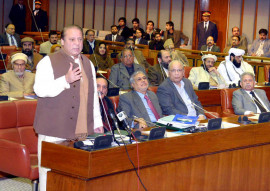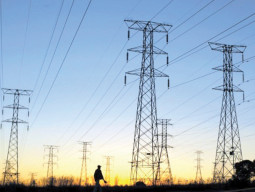
Prime Minister Nawaz Sharif joined Tajik President Emomali Rakhmon, Kyrgyz Prime Minister Sooronbay Jeenbekov and Afghan Chief Executive Abdullah Abdullah in Tajikistan's city of Tursunzoda to launch construction of the electricity link backed by Washington and the World Bank.
The 1,200 kilometre (746-mile), 1300 megawatt electricity link called CASA-1000 is set to connect the four countries by 2018.
US Deputy Assistant Secretary for Central Asia Daniel Rosenblum said at the ceremony that Washington has allocated $15 million to the project.
"This project connects the markets of Central and South Asia," the US official said in comments translated into Russian.
PM Nawaz, Tajik president agree to boost energy ties
"All the participating countries win from this project: both the suppliers and consumers of electricity," he said.
The "successful completion of this project will open doors for the completion of other projects in the region," Rosenblum added.
Tajikistan, a mountainous country that generates almost all its electricity from hydroelectric power and has an energy surplus in summer, is expected to supply more than 75 per cent of the electricity.
Neighbouring Kyrgyzstan will supply the remainder for the electricity line that will end in Peshwar in energy-starved country’s north.
Tajikistan looks to promote trade in Pakistan
The overall supply potential of the shared grid has been cast under doubt as ex-Soviet Kyrgyzstan and Tajikistan battle growing energy deficits, however.
Both countries have failed to attract investment to build two mega-dams that would revamp their ageing national grids and increase the supply potential of CASA-1000.
Pakistan has long suffered chronic energy shortages, while the population of much of Afghanistan lives without stable electricity despite billions of aid dollars spent on energy infrastructure.
But Afghanistan said on Wednesday it would only play a transit role in CASA-1000 as it seeks to develop its own hydroelectric power potential.
Britain, the European Investment Bank and Islamic Development Bank are also financing the CASA-1000 project.























1714029027-0/Tribune-Collage-Feature-Images-(11)1714029027-0-270x192.webp)




















COMMENTS (8)
Comments are moderated and generally will be posted if they are on-topic and not abusive.
For more information, please see our Comments FAQ